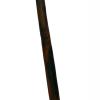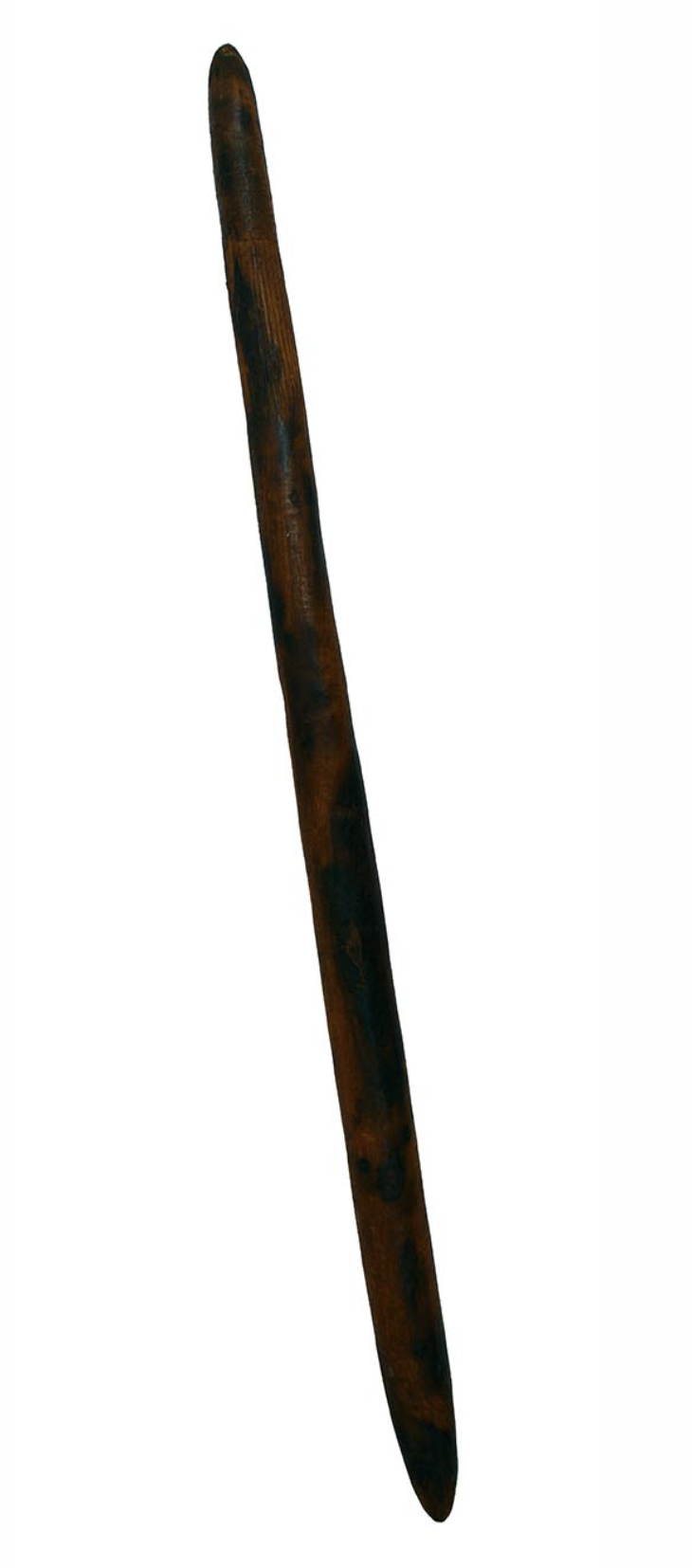The digging stick can be referred to by many names among different Aboriginal tribes (wana, kuturu, or karlangu). Primarily a feminine tool, it is one of the attributes of women in Aboriginal representations, along with the coolamon (basket).
The digging stick has several functions: digging, tracking, but also leaving marks in the sand (to recognize places, or as part of ceremonies). It is very practical and can be used in all circumstances.
As an everyday tool with many uses, digging sticks are simply made. This one is no exception: it is simply carved from wood, polished, and then painted with natural pigments. The multiple and common uses of these objects, as well as their manufacture (from wood), mean that very old pieces are rare.
ANONYME
Digging Stick , c.1950
Art : Aboriginal
Origine : Autres / Others
Dimensions : 4,5 x 83 x 4 cm
Medium : Wood
Price : Nous contacter / contact us
N° : 4335

